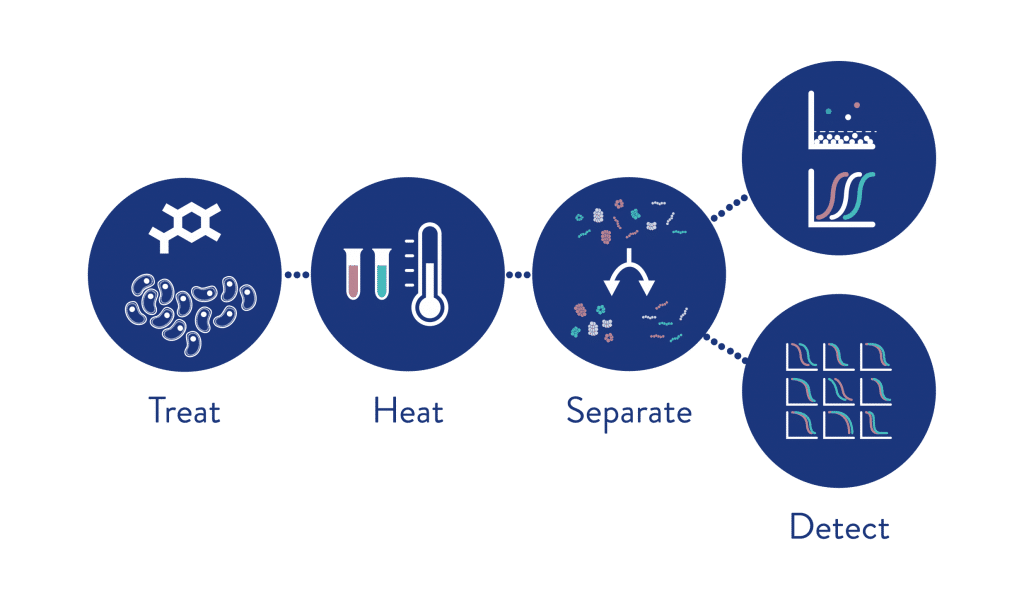CETSA® by Pelago Bioscience is a well-proven, best-in-class technology used to assess cellular protein-ligand binding. CETSA can be applied throughout all steps of the drug discovery value chain. Because neither the ligand nor the protein is modified, CETSA provides reliable measurements of target engagement in authentic cellular environments and under actual physiological conditions. In this way, biologically relevant values can be obtained from any type of cellular matrix – i.e. cell lines, animal tissue or patient samples – to help you explore, discover and confirm drug candidates faster.
CETSA® Technology
Intellectual Property
Pelago Bioscience was founded to provide and develop the patented Cellular Thermal Shift Assay (CETSA) in 2013. The CETSA method is patented in most regions worldwide (IP documentation).
Contact us to learn more about the CETSA IP.

How does CETSA® work?
The CEllular Thermal Shift Assay (CETSA) is based on the same biophysical principle as traditional thermal shift assays (TSAs), but leverages the novel insight that melt curves of proteins can also be measured in intact cells and that proteins unfold and aggregate at individual and specific temperatures. The very basis for thermal shift assays, cellular or not, is that the thermal stability of proteins can change if their environment is altered.
In its simplest form, CETSA is carried out on a single protein basis, assessing target engagement qualitatively by incubating and heat shocking cells in presence and absence of the studied compound. Quantifying the amount of protein that remains soluble after heat shock and plotting this to a range of different temperatures gives the CETSA melt curve of the protein. If the compound has bound to the target protein the latter becomes more or less resistant to heat, causing a shift in the melt curve (also known as a thermal shift).
Target engagement can also be quantified by exposing the cells to different concentrations of the compound and comparing the extent of stabilization of the target protein at specific temperatures. Such concentration-response experiments allow CETSA specific potencies of target engagement to be determined. These potencies incorporate more than just the protein-ligand affinity, they also include factors such as membrane permeability, cellular activation or degradation, accessibility of the protein binding site…all the factors that make data generated within a cellular system more valuable.
Naturally, this gives you more accurate and biologically relevant assessment of target engagement compared to traditional biochemical or molecular biology methods that require tailored cellular systems, tagged or truncated proteins in highly defined buffers or modified compounds.
CETSA® - Flexible assay formats
Below you can read and find information about the different CETSA formats, all fit for purpose and based on the same underlying principles.

- Proteome wide profiling of compound-induced changes in protein thermal stability
- Information about direct binding and pathway related effects
- Ideal format for target deconvolution, MoA, toxicology and biomarker investigation
- Timeline: Minutes
- Rapid assay validation
- Confirming Cellular Target Engagement on multiple targets
- Useful for hit confirmation, early feasibility studies, lead optimization, translational studies
- Rapid assay validation
- Confirming Cellular Target Engagement on multiple targets
- Useful for early feasibility studies, hit confirmation, lead optimization, and translational work enabling selectivity profiling
- Based on peptide standards that can be generated for any target
- Plate based, amenable for high throughput screening.
- Format for library screening, hit confirmation, tool finding and lead optimization, hit identification, and SAR generation
